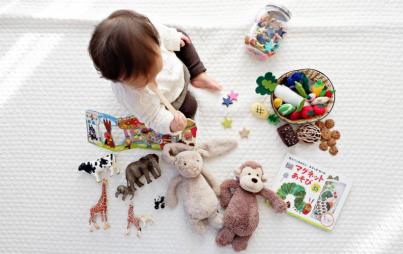
This support my gender-fluid child receives at school means so much to my family, but the ripple effects of what the children will learn will go far.
Kids in my neighborhood aren't sure what to make of my child, a six-year-old who has stealth Ninja moves and wields toy swords but also likes to wear makeup, nail polish, and clip-on earrings. Two kids have taken to asking whether my child is a boy or a girl. For one of them, it's a bullying tactic. For the other, it seems to be pure confusion, no matter how many times I remind her which pronouns she can use when referring to my child.
I can’t help but get frustrated, thinking about how the burden of gender education is placed solely on gender-fluid and trans kids and their parents and how unreasonable that is. When kids approach me with questions about my child's gender or when I overhear someone saying, “isn't that for girls?” with a sideways scowl, I nearly always take the time to explain. I offer answers like, “Anyone can wear/do/be anything they want” or explain that gender is how you feel on the inside and that sometimes how you feel doesn't always match the sex you were assigned when you were born. Sometimes kids will sit and listen to what I'm saying, but often, they just look at me like I have two heads.
If parents and teachers reinforce gender norms and stereotypes, kids won't understand beyond "boy" and "girl" and the social scripts that go along with those designations. As kids get older, exceptions to reinforced binaries become harder to understand.
Without an understanding of gender fluidity, kids are more likely to do and say things that are harmful to kids who express their gender in a less conventional way.
As the parent of a child who expresses gender in lots of different ways, I find I’m often expected to be the gender ambassador at any given moment — and my kid is constantly expected to account for clothing choice or hairstyle. It’s exhausting to continually be asked to explain gender to any and every person who seems confused by my child's expression and identity. And when kids have to regularly explain or defend their identity, their self-esteem is negatively impacted. My child feels happy in a colorful headband or a burst of bright nail polish but can become instantly deflated when someone laughs or asks “Why are you wearing that?”
Last summer, as my child was about to start kindergarten, I felt a growing anxiety. Would the new school be supportive? Would the kids be mean when my kid strolled in in pink shoes, a sparkly shirt, and leggings? We had been fortunate to be supported by our preschool teachers. They had expressed gratitude for how my child's expression had expanded some of the children's ideas about what kinds of play and colors were cool for all kids.
You Might Also Like: Because “I’m A Human”: Non-Binary Parenting
I emailed the teacher and principal a couple of weeks before school started to explain how my child had been expressing gender, how some of the interactions we had been having with neighbor kids had been affecting us, and how an awareness of other people's perceptions and expectations were growing. I emphasized our support of our child's gender expression and asked if we could count on some advocacy from the classroom and the school, like using the words “children” and “students” instead of “boys and girls” and avoiding dividing them up by gender for games or lessons. I also asked if they would help us affirm our child's gender expression, and help classmates understand how wide the gender spectrum is.
Both the teacher and principal replied warmly. They each thanked me for sharing these things and assured me that my child would be supported at school. A few weeks later, the teacher told me she had ordered some new children's books about gender for the classroom – Who Are You, I Am Jazz, Jacob's New Dress, and Red and said she was planning to read these books with the class. She also invited me to come in and read the books — or any of our own — with the children and have a class discussion if I wanted to.
This support means so much to my family, but the ripple effects of what the children will learn will go far. Kids who understand beyond binaries feel less confused about different gender presentations and ask fewer hurtful questions.
My kid's classroom posts pictures from the school day on a secure hub, where parents can enjoy some moments from each day. These are often great conversation starters with my child. One of my favorite pictures is of a classmate and my child, both beaming, both dressed up in princess costumes. My child was thrilled that a boy wanted to be a princess!
Smashing gender binaries is a community project. My child's teacher's willingness to teach her classroom about the gender spectrum has helped to make my child's world — and the world in general — a safer and kinder place for everyone.








